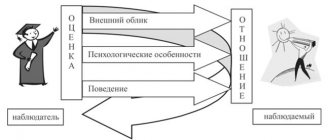Introduction
Business communication is a necessary part of human life, the most important way of communicating with other people. Ethical norms are eternal and one of the main regulators of these relations, expressing our ideas about good and evil, about justice and injustice, about the right or wrong action of a person. And communication in business relationships with their subordinates, bosses or colleagues, everyone, one way or another, consciously or spontaneously relies on these ideas. But depending on how a person understands moral norms, what content he puts into them, to what extent he takes them into account in communication in general, he can make his business communication easier, more effective, help in solving problems and achieving goals, and also make communication more difficult or even impossible.
The specificity of business communication is due to the fact that it is based on and associated with a specific type of activity related to the production of a product or commercial effect. In this case, the parties to business communication act in a formal (official) status, which determines the necessary norms and standards (including ethical) of people’s behavior. Like any type of communication, business communication is historical in nature; it manifests itself at different levels of the social system and in different forms. Its peculiarity is that it is not self-sufficient, not an end in itself, but a means to achieve other goals. In market relations, the main goal is to achieve the greatest profit.
The most important feature of business communication is that it is necessary to be able to build relationships with different people, while achieving maximum efficiency of business contacts. The most tempting proposal for a partner may “fail” because of his frowning or uneducated appearance. What if the business proposal itself is not a business proposal? Let's take a typical situation: a young, beautiful woman comes to us when we announce a competition for a job related to working with people. She asked: “Why did you come to us?” She tells us confidentially, with a pleasant tone and pleasant expression: “I get so little from my work! I live alone with a child, my husband has not paid child support for a long time. I don't even subscribe to newspapers anymore. I only buy occasionally. I just bought it and here’s your ad.” “Have you ever worked with people?” - “No, but I think I’ll try, maybe everything will work out.” I'm afraid they'll cut me off at work anyway." The outcome of such a presentation is not difficult to predict.
Understanding the specifics of business communication leads to the idea that he must learn.
Business communication culture should be understood as a high level of communication skills in the business world.
The culture of business communication presupposes:
- High communication culture, i.e. the art of speaking (including in public) and listening.
- The ability to objectively perceive a partner and understand him correctly.
- The ability to build relationships with each partner to achieve effective interaction based on mutual interests.
The sides of business communication are interconnected: The ability to correctly perceive and accept a partner or audience helps to find the right arguments, and mastery of rhetoric helps to interpret them. All this is necessary for a successful business contact, where the ability to interact with a partner is demonstrated: overcoming communication barriers, taking the necessary psychological position, achieving the appropriate level of communication, etc. Ideally, a businessman should have equivalent knowledge of all aspects of communication in the business world.
| Page: 1 of 3 next —> | Go to page: | |
1
Ministry of Higher Education of the Russian Federation
CHELYABINSK STATE UNIVERSITY Troitsk branch Coursework In the discipline:
Topic: “Ethics of business relations”
a group student Checked:
Troitsk 2003
Contents Introduction 3 Chapter 1. Concept, structure and functions of business communication
1.1.
Business communication concept. 6
1.2.
Structure and functions of communication. 7
1.2.1.
Communicative function of communication. 8 1.2.2. Interactive and perceptual functions of communication. 12 Chapter 2. General ethical principles and the nature of business communication
2.1.
The concept of the principles of business communication. 13
2.1.1.
Top-down business communication ethics. 14 2.1.2. Ethics in business communication from the bottom up. 17 2.1.3. Ethics of business communication “horizontally”. 18
2.2.
Ethical and cultural requirements for classroom speaking. 20
2.2.1.
Stages of preparing and conducting a public speech. 21 2.2.2. Ways to give a speech. 23
2.3.
Establishing contact with the audience. 24
2.4.
Posture, gestures, facial expressions of the speaker. 26
Conclusion 28
List of sources used 30
Annex 1
Introduction
Business relationships are a complex, multifaceted process of developing contacts between people in the professional sphere. Its participants act in official capacities and are focused on achieving goals and specific tasks. A specific feature of this process is regulation, i.e. subordination to established restrictions that are determined by national and cultural traditions and professional ethical principles. A prerequisite in the process of business relations is communication between people; I will consider the ethics of business relations using the example of communication, relationships, because With competent communication and the ability to win over your interlocutor, the final result also depends. Business relationships are closely related to communication, the interaction of production activities - this is the most widespread type of social communication. It represents the sphere of commercial and administrative-legal, economic-legal and diplomatic relations. New economic and social conditions encouraged the broad masses of the population to engage in commercial and organizational activities. This circumstance has brought to the fore the need to teach linguistic forms of business communication, the need to increase the linguistic competence of persons entering into social and legal relations and guiding the actions of people. In market conditions, linguistic competence becomes an indispensable component of general professional training for managers, municipal employees, assistants, and managers at all levels. Business communication today penetrates into all spheres of public life. Enterprises of all forms of ownership and individuals enter into commercial and business relationships. Competence in the field of business communication is directly related to success or failure in any business: science, art, production, trade. As for managers, entrepreneurs, production organizers, people involved in management, communicative competence for representatives of these professions is the most important part of their professional appearance. According to the nature and content of relationships, there are formal (business) and informal. Business relationships are a process of interconnection and interaction in which activities, information and experience are exchanged that involve achieving a certain result, solving a specific problem or realizing a certain goal. In general, business communication differs from ordinary (informal) communication in that in its process goals and specific tasks are set that require solutions. In business communication, we cannot stop interacting with a partner (at least without losses for both parties). Business communication can be divided into direct and indirect. Direct business communication has greater effectiveness, the power of emotional impact and suggestion than indirect communication; socio-psychological mechanisms directly operate in it. The topic I have chosen is relevant because the problem of communication ethics in business has recently received a lot of attention; even a separate branch of science has emerged with the same name, which defines itself as interdisciplinary, based on moral theory, management, economics and psychology. The reason for attention to business ethics issues is primarily related to the economic damage that unethical behavior of employees and business partners causes to a company, as well as the environmental, economic and social damage that corporations and individual entrepreneurs inflict on citizens and society as a whole, seeking to reduce costs and increase your competitiveness. The purpose of writing this course work is to examine the topic I have chosen: “Ethics of business relations.” To develop the topic, it is necessary to answer the following questions: give the concept of ethics in business relations in communication, consider the structure and functions of business communication, general ethical principles and the nature of business communication, analyze the ethical and cultural requirements for speaking in the audience, and finally draw a conclusion on the written work. When writing this course work, I used the following sources: A.A. Guseinov’s textbook, Gardariki “Ethics”. The textbook was prepared by the Department of Ethics, Faculty of Philosophy, Moscow State University. M.V. Lomonosov. The uniqueness of the new textbook lies in its non-doctrinal nature. He systematizes ethical knowledge in its objective, generally valid content. The primary emphasis is not on comparisons and internal disputes of different directions, but on the moral concepts, problems, ideas, and conflicts themselves. In doing so, the authors relied on the history of European ethics, moral culture, and modern discussions on moral issues. Designed for students of all humanities and graduate students. It may also be of interest to representatives of other sciences who wish to obtain a generalized idea of the current state of ethics; I also used lectures on the ethics of communication by I. G. Shirokova. The book was created on the basis of lecture notes from Moscow university students. The material in the book is presented extremely concisely and requires systematization and specification. The knowledge acquired in the process of studying this book is very small. Attention is focused on brief concepts and signs of communication ethics; It is very difficult to formulate an approximate structure (plan) of answers to questions that arise during reading, which complicates the process of perceiving the material read. This book is not an alternative to textbooks for obtaining fundamental knowledge; it serves as a guide for passing exams. The textbook for economic universities - Business Ethics by Yu. Yu. Petrunin outlines the main topics, problems, approaches, and concepts of business ethics. Based on classic Western works, the authors adapt a variety of theoretical and practical material to Russian conditions. The manual is intended primarily for management and economic specialties. It will also be useful to business professionals in addressing the ethical issues of business life. Next, I used the book by Fritzsche D., Business Ethics. Global and managerial perspective. The main leitmotif of David Fritzsche’s book: “Ethics is a necessary condition for achieving success in business!” The book examines the ethical issues that arise in complex business relationships, including the problems that company leaders must resolve. Business involves economic relationships among many stakeholders—customers, employees, shareholders, suppliers, competitors, governments, and communities. Often, parties put forward conflicting demands, and a modern manager must take into account their entirety. The main advantage of the book is its concentration on applied management issues. The author reveals in detail the mechanism for making ethically competent decisions and proposes a methodology that allows you to correlate economic, social, technological and other management tasks with ethical standards. The book is equipped with many examples of real situations and test questions for better assimilation of the material. I also used other literature.
Chapter 1. Concept, structure and functions of business communication
1.1.
Business communication concept. Ethics is the doctrine of morality and ethics. The term “ethics” was first used by Aristotle (384-322 BC) to refer to practical philosophy, which should answer the question of what we must do in order to perform the right moral actions. Morality is a system of ethical values that are recognized by a person. Morality is the most important way of normative regulation of social relations, communication and behavior of people in various spheres of public life - family, everyday life, politics, science, work, etc. The most important categories of ethics are: “good”, “evil”, “justice”, “good”, “responsibility”, “duty”, “conscience”, etc. Communication is the process of interaction between social actors: social groups, communities or individuals, in which information, experience, abilities and results of activities are exchanged. Communication acts as a way of being for society and people. It is in the process of communication that the socialization of the individual and his self-realization occur. According to Aristotle, the ability to communicate distinguishes a person from “morally underdeveloped creatures” and from the “superman.” Therefore, “one who is unable to enter into communication or, considering himself a self-oppressive being, does not feel the need for anything, no longer constitutes an element of the state, becoming either an animal or a deity.”1 The specificity of business communication is due to the fact that it arises on the basis and regarding a specific type of activity related to the production of a product or business effect. At the same time, the parties to business communication act in formal (official) statuses, which determine the necessary norms and standards (including ethical) of people’s behavior. Like any type of communication, business communication is historical in nature; it manifests itself at different levels of the social system and in various forms. Its distinctive feature is that it does not have a self-pressing meaning, is not an end in itself, but serves as a means to achieve some other goals. In market conditions, this is primarily about obtaining maximum profit. Business communication is a necessary part of human life, the most important type of relationship between people. Eternal and one of the main regulators of these relations are ethical norms, which express our ideas about good and evil, justice and injustice, the correctness or incorrectness of people’s actions. And when communicating in business cooperation with their subordinates, boss or colleagues, everyone in one way or another, consciously or spontaneously, relies on these ideas. But depending on how a person understands moral norms, what content he puts into them, and to what extent he generally takes them into account in communication, he can make business communication easier for himself, make it more effective, help in solving assigned tasks and achieving goals, and complicate this communication or even make it impossible.2 Taking into account all of the above, the ethics of business communication can be defined as a set of moral norms, rules and ideas that regulate the behavior and relationships of people in the process of their production activities. It represents a special case of ethics in general and contains its main characteristics.
1.2. Structure and functions of communication.
The structure of communication can be approached in different ways; in this case, the structure will be characterized by highlighting three interconnected parties in communication: 3 Communicative - consists of the exchange of information between communicating individuals;
Interactive - consists of organizing interaction between communicating individuals (exchange of actions); Perceptual - means the process of perception and knowledge of each other by communication partners and establishing mutual understanding on this basis. The use of these terms is conditional, sometimes others use them in a similar sense: in communication there are three functions - information-communicative, regulatory-communicative, affective-communicative. Let's look at each function separately. 1.2.1.
Communicative function of communication. During the communication process, there is not just a movement of information, but a mutual transfer of encoded information between two individuals - the subjects of communication. Therefore, information exchange takes place. But people do not just exchange meanings, they strive to develop a common meaning. And this is only possible if the information is not only accepted, but also comprehended. In the context of human communication, communication barriers may arise. They are of a social or psychological nature.4 The information itself emanating from the communicator can be motivating (order, advice, request - designed to stimulate some action) and ascertaining (message - takes place in various educational systems). For transmission, any information must be appropriately encoded, i.e. it is possible only through the use of sign systems. The simplest division of means of communication is into verbal and non-verbal, using different sign systems. Verbal communication uses human speech as such. Speech is the most universal means of communication, since when transmitting information through speech, the meaning of the message is least lost. The verbal communication process model includes 5 elements: WHO? (transmits message) – Communicator WHAT? (transmitted) – Message (text) HOW? (transfer in progress) – Channel TO WHOM? (message sent) – Audience WITH WHAT EFFECT? - Efficiency. Three positions of the communicator during the communicative process can be distinguished: Short-open (openly declares himself a supporter of the point of view being presented); Distant (behaves, emphatically neutral, compares conflicting points of view); Shclosed (remains silent about her point of view, hides it).
In modern communication, it is customary to distinguish 3 types of speech acts, depending on the expected reaction of the addressee: questions, incentives and messages. If no reaction is expected on the part of the interlocutor other than “taking note” of the information, then the statement belongs to the class of message. They must be formulated clearly, concisely, and be truthful. If the expected reaction to a remark is some action outside the framework of the dialogue, then the speaker encourages with speech. A feature of business relationships is that orders and instructions are given in a polite tone. It is better to use this type of incentive, such as a request or advice. A statement aimed at obtaining an answer (verbal reaction) belongs to the class of questions. Depending on the speaker’s attitude, a distinction is made between the actual questions (the questioner himself does not know the correct answer) and the so-called. “teacher’s” questions (the speaker wants to check the addressee of the speech). Any statement, especially a categorical one, evokes a spirit of contradiction. If you give the message the form of a question, you can soften and neutralize the interlocutor’s protest. The question form reduces the likelihood of a dispute or conflict in professional communication. Questions allow a business person to direct the process of transmitting information in the right direction, seize and maintain the initiative, and activate the listener. Based on these functions, there are 5 types of questions: “Closed” - these are questions that can be answered with “yes” or “no”. The trust of the interlocutor can be gained by asking questions at the beginning of contact that require a “yes” statement. “Closed” questions deprive the other person of expressing his opinion; it cannot be abused. “Open” questions require some kind of explanation and are asked to obtain additional information and clarify real motives. They begin with the words “What, who, how, how many, why, what is your opinion...” Rhetorical ones do not require an answer, their purpose is to raise new questions, point out unresolved problems, and provide support for the speaker’s position through tacit approval. Questions for reflection force you to reflect, comment on what has been said, and make amendments to what has been said. Turning questions keep the conversation in a strictly established direction or raise new problems or switch to something else. Nonverbal communication. It has been established that in the process of human interaction, 60-80% of communication is carried out through the use of non-verbal expressions. They develop as social signs of communication, although some of the elements that make them up are innate. Gestures and facial expressions, poses are endowed with semantic-expressive coloring and are subject to ethical standards. In terms of official interaction, the tone of nonverbal behavior should remain neutral. Excessive gesticulation during a business conversation can be regarded as a sign of familiarity. Nonverbal expressions are divided into four groups: Extra- and paralinguistic - various near-speech additives that give communication a certain semantic coloring: type of speech, intonation, pauses, laughter, coughing, etc. Optical-kinetic is what a person “reads” from a distance: gestures, facial expressions, pantomime. A gesture is a movement of the arms or hands; they are classified based on the functions they perform: - communicative (replacing speech) - descriptive (their meaning is understandable only with words) - gestures that express an attitude towards people, a person’s state. Some gestures are arbitrary (rhythmic, pointing, etc.), others are determined by impulses of the subconscious. Facial expressions are the movement of facial muscles. Mastery of facial expressions, the ability to convey emotions (joy, anger, surprise, disgust, fear, sadness...) is a professional requirement for managers, politicians, teachers, and everyone working with people. It is believed that the most expressive are the mouth and lips. Pantomime (kinesics) is a set of gestures, facial expressions and body position in space (postures). Proximics - organization of space and time of the communication process) There are four main communication distances: Shintimnaya - from 0 to 0.5 meters. People who, as a rule, have close, trusting relationships communicate on it. Information is transmitted in a quiet and calm voice. Much is conveyed through gestures, glances, facial expressions; Interpersonal - from 0.5 to 1.2 meters. It allows communication between friends; SHOformal business or social - from 1.2 to 3.7 meters. Used for business communication, and the greater the distance between partners, the more formal their relationship; Public - more than 3.7 meters. Characterized by speaking in front of an audience. With such communication, a person must monitor his speech and the correct construction of phrases. Visual contact - visuals, or eye contact. It has been established that people usually look into each other's eyes for no more than 10 seconds. With the help of our eyes, we receive the most accurate and open signals, therefore, during a business conversation, it is important to control the expression of the eyes, to meet the gaze of the communicant at least 60 - 70% of the time of contact. It is recommended to direct your gaze to an imaginary triangle on the interlocutor’s forehead and not let it go below his eyes. Physiological studies have noted that when a person is satisfied and joyfully excited, his pupils dilate 4 times compared to the normal state, and vice versa. By this sign you can accurately determine the reaction to what you hear. Understanding nonverbal language allows you to accurately determine the intentions and position of your interlocutor.
1.2.2. Interactive and perceptual functions of communication.
The interactive function is a characteristic of those components of communication that are associated with the interaction of people, with the direct organization of their joint activities. There are two types of interactions - cooperation and competition. Cooperative interaction means Coordination of forces of participants. Cooperation is a necessary element of joint activity and is generated by its very nature. One of the most striking forms of competition is conflict.6 The perceptual function of communication is the process of people perceiving and understanding each other. All three aspects of communication are closely intertwined, organically complement each other and constitute the communication process as a whole.
Chapter 2. General ethical principles and the nature of business
communication 2.1.
The concept of the principles of business communication. The ethics of business communication should be taken into account in its various manifestations: In the relationship between an enterprise and the social environment, between enterprises, within one enterprise - between a manager and subordinates, between a subordinate and a manager, between people of the same status. There are specifics between the parties to one or another type of business communication. The task is to formulate principles of business communication that not only correspond to any type of business communication, but also do not contradict the general moral principles of human behavior. At the same time, they should serve as a reliable tool for coordinating the activities of people involved in business communication. The general moral principle of human communication is contained in the categorical imperative of I. Kant: “Act in such a way that the maxim of your will can always also have the force of the principle of universal legislation.” In relation to business communication, the basic ethical principle can be formulated as follows: in business communication, when deciding which values should be preferred in a given situation, act so that the maxim of your will is compatible with the moral values of the other parties involved in the communication, and allows coordination of the interests of all parties.7 Thus, the basis of the ethics of business communication should be coordination, and, if possible, harmonization of interests. Naturally, if it is carried out by ethical means and in the name of morally justified goals. Therefore, business communication must be constantly checked by ethical reflection, justifying the motives for entering into it. At the same time, making an ethically correct choice and making an individual decision is often not an easy task. Market relations provide freedom of choice, but at the same time increase the number of decision options and give rise to a set of moral dilemmas that await business people at every step in the process of their activities and communication. Despite all the problematic nature and difficulty of choosing a moral position, there are a number of provisions in communication, following which you can greatly facilitate business communication, increase its efficiency, and avoid mistakes in the process of interaction with others in business.8 It is necessary to understand that there is no absolute truth in morality and the highest judge among men. When it comes to the ethical lapses of others, one should not make “moral elephants” out of “moral flies.” When it comes to your mistakes, you should do the opposite. In morality, one should praise others and make claims on oneself. The moral attitude of others towards us ultimately depends only on ourselves. When it comes to the practical establishment of moral standards, the main imperative of behavior is “start with yourself.” Particular attention should be paid to the golden rule of communication ethics: “Treat others as you would like to be treated.” In its negative form, as formulated by Confucius, it reads: “What you do not wish for yourself, do not do to others.” This rule also applies to business communication, but in relation to its individual types: “top-down” (manager-subordinate), “bottom-up” (subordinate-manager), “horizontally” (employee-employee) requires specification.
| Page: 1 of 3 next —> | Go to page: | |
| © 2007 ReferatBar.RU — Home | Sitemap | Reference |
Business Etiquette
Business documents appeared in Russia after the introduction of writing in the 10th century. The first written documents established in the chronicle are the contractual texts of Russian treaties with the Greeks in 907, 911, 944 and 971, and in the 11th century the first Kievan Russian code of laws “Russian Truth” appeared - an original monument of writing, allowing one to judge the development of the legal and socio-political terminology of that time. In the language of “Russkaya Pravda” it is already possible to highlight the peculiarities of the use of words and the organization of speech, which are one of the characteristic features of business style. We are talking about high terminology, the predominance of composition over subordination in complex sentences, the presence of complex constructions with compositional associations “a”, “and”, “yes”, “how”, and non-union chains. Of all types of complex subordinate clauses, the most common are those with clauses (with conjunctions, if any). Russian Pravda already uses terms that indicate the development of legal relations in Ancient Rus': head (killed), head (killed), ear (killer), ear (witness), vira (looted), booty (property), vein (bride price ), kuna (money). Legal terms represent the most important lexical layer of the language of ancient documents.
9.Ethics of business communication in the teachings of Confucius
Confucius (often referred to in literature as Kun Tzu - teacher Kun) was one of the first to formulate in a negative form the categorical imperative of behavior, which has universal meaning and is also applicable in business communication: “do not do to others what you would not wish for yourself.” "
The positive form of this classical formulation is given by Immanuel Kant. However, Confucius contains a large number of sayings on the ethics of communication and business behavior. First of all, they relate to the principles of communication between a manager and a subordinate and the disclosure of those norms and principles of communication that make it the most effective and efficient from an ethical point of view.
See: Confucius. Lun-yu //
Ancient Chinese philosophy: Collection. texts in 2 volumes. T. 1. - M.: Mysl, 1972.
Business communication
Business communication consists of business: negotiations, conversations and meetings, as well as public speaking. Thus, business communication becomes a multifaceted process of developing relationships in the world of work. The participants in these relationships achieve their goals and specific objectives through communication, while maintaining their official status.
Maintaining status is specific to a given process. The regulation of business communication and compliance with established rules also remains. These include cultural or national traditions, mentality, professional ethics, public and implicit norms of behavior. Business etiquette forms rules that contribute to the development of relationships between people in the work environment and their mutual understanding.
Business etiquette is divided into two subgroups: communication between employees of equal status and communication with superiors. In both cases, the general rule is to treat all colleagues and partners in a friendly and correct manner, regardless of their personal disposition towards the person. The ability to deal well with people is one of the main factors influencing your success in business, official or service activities. D. Carnegie argued that success depends only 15% on your professional skills and 85% on your ability to work with people.
Means of communication:
- speech;
- language;
- Gestures;
- pantomime;
- Phrases;
- Emotions.
Components of the communication process:
- Message;
- Talk;
- report;
- Point of view;
- It's a compliment.
- Types of business communication:
- Conversations;
- Negotiation;
- Meeting;
- Visits;
- public performance.
BIBLIOGRAPHY
- Dorofeeva L.I. Organizational behavior: educational and methodological complex. – Saratov: Saratov source, 2014. – 394 p.
- Izmailova M.A. Business communication: textbook. – 4th ed. – M.: Dashkov and K, 2011. – 252 p.
- Komarova L.V. Technologies of business communication and management activities: textbook. – 2nd ed., stereotype. – M.: Publishing house RAGS, 2010. – 148 p.
- Mkrtychyan S.V. On the issue of the scope of the concepts “business communication” and “business speech” (terminological aspect) // World of Linguistics and Communication. – 2007. – No. 7. – P. 15-19.
- Psychology and ethics of business communication: textbook / ed. V.N. Lavrinenko. – 5th ed. – M.: UNITY-DANA, 2008. – 415 p.
- Spivak V.A. Business communications: theory and practice: textbook for bachelors. – M.: Yurayt, 2014. – 460 p.
- Chernyshova L.I. Business communication: textbook. – M.: UNITY-DANA, 2008. – 416 p.
Attention!
If you need help writing a paper, we recommend turning to professionals. More than 70,000 authors are ready to help you right now. Free adjustments and improvements. Find out the cost of your work
Free estimate
0
Size: 21.26K
Downloads: 152
03/23/17 at 07:24 Author: Sema2016
Liked? Click on the button below. It's not difficult for you
, and we
are pleased
).
To download Abstracts for free at maximum speed, register or log in to the site.
Important! All presented Abstracts for free downloading are intended for drawing up a plan or basis for your own scientific works.
Friends! You have a unique opportunity to help students just like you! If our site helped you find the job you need, then you certainly understand how the job you add can make the work of others easier.
Add a job
If, in your opinion, the Abstract is of poor quality, or you have already seen this work, please let us know.
Business communication culture
The culture of business communication and business etiquette are considered not only as a special form of behavior, but also as a system of signs. Business conversations combine verbal, logical, nonverbal and psychological culture. Business conversations, business negotiations, telephone conversations in the office, business meetings and communication with colleagues and superiors take place according to different scenarios.
Each of these forms must be based on good will and mutual respect. The color and result of business communication depends on the general culture of the communicators. According to etiquette, language itself, as the basis of business communication, does not imply gross errors, neologisms and slang. The speech should be short and understandable to the interlocutor, i.e. accessible, logical and accurate. Correctness, visual language of speech is developed through exercises from the course of public speaking and reading classical literature.
Until a speaker has confidence in his ability to read and write and in the correctness of his speech, he cannot become a confident person. Reading is successful. His stylistic and linguistic errors will be noticed by his interlocutors immediately or out loud (depending on the general culture of the listener). Only this fact can reduce the image of a businessman.
There are a mountain of books written on business etiquette, and there are many courses and trainings for aspiring businessmen. Without a culture of business communication, they will not conclude serious business deals and increase their net worth. The business world is a special world with its own culture, into which outsiders are not allowed.
Business correspondence
Business correspondence is a system of requirements (standards) that must be adhered to in order to correctly and competently draw up a document. First of all, you need to decide on the type and urgency of delivery of the letter. And also with the degree of accessibility of the document for the recipient, whether it will be one letter or several, with clarifications / lists / suggestions. The letter must be written correctly in terms of spelling and style.
A business letter must include the name of the company that acts as the sender; date of dispatch and recipient's address. It is also necessary to indicate the initials, position of the recipient or the department to which the letter was sent. The main part of the letter consists of an introduction/address, a topic and a brief description of the purpose of the document, followed by the text and conclusion. At the end of the document, the sender's signature is placed, and attachments or copies, if any, are indicated.
When preparing a document, it is recommended to use the company's form. If the letter is sent via the Internet, then the following data must be entered in the “subject” field:
- document type;
- subject;
- summary.
This is necessary to avoid a situation where an incoming message ends up in the spam folder, and the recipient can delete the letter without reading it.
The letter should be simple and understandable, without an excessive amount of professional terms. In business correspondence, the use of slang expressions and phrases with double meaning is not allowed.
- by mail - no later than ten days;
- when negotiating via the Internet - from 24 to 48 hours.
Business correspondence must be carefully prepared and rechecked several times before sending. An incorrectly written letter with spelling errors can harm the company’s reputation, since a business document is the business card of the company.
Formal style of business communication
Official business style is a kind of literary language that serves the sphere of official business relations: relations between government authorities and the population, between countries, between companies, organizations, institutions, between individuals and society. The most common feature of formal business style is its deliberately restrained, strict, impersonal and matter-of-fact tone (formal tone), which serves to express the meaningful and prescriptive nature of documents.
Language etiquette is a system of rules of linguistic behavior and stable formulas for polite communication. Mastery of speech etiquette helps to gain authority, creates trust and respect. Strict adherence to speech etiquette in business communication leaves a positive impression of the organization among clients and partners and maintains its positive reputation. The word etiquette (from the French etiquette - label, tag) is defined as a set of rules of behavior related to the way people are treated (how they treat other people, forms of address and greeting, behavior in public places, manners and clothing).
LABEL COMMUNICATIONS
It should be noted that the culture of behavior is an integral part of the general culture and culture of speech, which contains forms of communication and actions of people that are based on aesthetic taste, morality, and compliance with certain rules and norms. A true culture of behavior is the organic unity of a person’s external and internal culture, the ability to find the right line of behavior in any life situation, including business.
In the most general sense, etiquette (from the French etiquette - label, label) means an established order of behavior somewhere. In a narrower sense, etiquette is a set of rules of behavior that relate to the external manifestation of a person’s attitude towards others (forms of greetings and addresses, treatment of other people, clothing and manners, behavior in public places). Etiquette is an aesthetic form of manifestation of moral culture.
That is, these are generally accepted rules of individual behavior in society. We can say that etiquette connects the inner world of an individual with its external manifestation. It is associated with such concepts as politeness, intelligence, correctness, modesty, tact, etc. It is based on respect for the people around you. We can say that etiquette and ethics are the basis of a person’s morality; they form and lay the basis for all of his activities.
Business etiquette is the most important aspect of the professional behavior of a businessman, a businessman. Knowledge of etiquette and its rules is a necessary professional, business quality that requires not only acquisition, but also constant improvement. As researchers note, almost two-thirds of failed deals that were profitable for Russian entrepreneurs did not take place precisely because businessmen do not know the rules of business communication and do not have a culture of behavior. Due to incorrect or ill-mannered behavior, the careers of employees of many organizations are destroyed.
Business etiquette is an established procedure for behavior in the field of business communications and business. In the practice of business relations, there are standard situations that cannot be avoided; for these situations, forms and rules of behavior are developed. We can say that this is a set of rules of conduct in business that represents the external side of business communications.
Business etiquette is the result of a long selection of forms and rules of the most appropriate, optimal behavior that contributed to success in business relationships.
At the same time, business etiquette consists of many sections, in particular:
— Technologies of non-verbal communication, including gait, gestures of good manners, rules of greeting, etc.;
— Protocol issues, rules for receiving delegations: meeting, acquaintance, appeal, as well as rules for negotiations.
— Manners of managers and subordinates;
— Business clothes, style (the so-called dress-code).
— Telephone etiquette;
— Speech etiquette, netiquette, etc.
A culture of behavior in business communication is simply unthinkable without observing the rules of speech and verbal etiquette, which is associated with the forms and manners of speech, vocabulary and principles, that is, with the entire style of speech adopted in the communication of a given circle of business people.
There are historically developed stereotypes of speech that were previously used by Russian entrepreneurs and merchants, and are now used by cultured Russian and foreign business people. In particular, these are the words: “ladies” and “gentlemen”, “sirs” and “madams”.
Speech etiquette is built taking into account the characteristics of partners entering into business relationships, conducting a business conversation: the social status of the subject and recipient of communication, their place in the official hierarchy, their profession, nationality, religion, age, gender, character. Speech etiquette is determined by the situation in which communication occurs. This could be a presentation, conference, symposium; a meeting at which the economic and financial situation of a company or enterprise is discussed; hiring or firing; consultation; company anniversary, etc.
Here are some rules of official business etiquette:
— when arriving at work, the first person to say hello is the one who entered the room; shaking hands is not necessary;
- no long telephone conversations, especially long discussions of problems of personal and intimate life, both your own and those of strangers;
- do not gossip or collect gossip, this is below the dignity of not only business people, it is below the dignity of any person;
- do not allow rudeness or familiarity; even criticism, disapproval or just a remark is expressed in the most polite and tactful form;
— disagreement and criticism are allowed only when discussing a common cause or project, and always takes the form: “wouldn’t it be better for us...”, where the emphasis is on the word “us.” This applies not only to peers, but also to subordinates or superiors.
So, business etiquette determines the forms and “techniques” of an individual’s communication, while business behavior should be based on general norms and principles of morality, demonstrating the connection between etiquette and ethics.
Principles of Business Ethics
The ethics of business communication must be considered in its various forms: In the relationship between a company and the social environment, between companies, in the same company - between a manager and subordinates, between a subordinate and a manager, between people of the same status. There are peculiarities between the parties to one or another type of business communication. The task is to formulate principles of business communication that not only correspond to each type of business communication, but also do not contradict the general moral principles of human behavior. At the same time, they should serve as a reliable tool for coordinating the activities of persons participating in business communication.
The following six basic principles should be highlighted:
- punctuality (do everything on time). Only the behavior of a person who does everything on time is normative. Delays interfere with work and are a sign that the person cannot be relied upon. The principle of doing everything on time applies to all work assignments. Organization and time management experts recommend increasing the time you think you need to get your work done by 25 percent.
- confidentiality (don't talk too much). Secrets of an institution, a company or a specific transaction must be kept as carefully as personal secrets. There is also no need to tell anyone what they heard from an employee, manager or subordinate about their work or personal life.
- Kindness, goodwill and friendliness. In any situation, it is necessary to be polite, friendly and courteous towards clients, clients, customers and colleagues. This, however, does not mean that you have to be friends with everyone you need to interact with in the service.
Ethics and etiquette
Business and professional life needs organization and orderliness.
Communication in business is regulated by business etiquette. It is designed to organize the interaction and behavior of people at work, when performing their official duties.
There are many types of etiquette: everyday, diplomatic, military, guest and others.
Business etiquette is one of the components of ethics. Without knowledge of the rules of business etiquette, it is impossible to achieve success in your chosen field of activity.
Compliance with all rules and norms of communication in a professional environment guarantees respect and authority among colleagues. The correct choice, appropriateness and timeliness of a word, gesture, posture, or other ethical sign reveals a person’s business and personal qualities from the best side.
The rules of business etiquette must be followed because they:
- contribute to the formation of a positive image;
- favor successful negotiations and business meetings;
- safety net in case of force majeure or awkward moments;
- provide an opportunity to more successfully and quickly achieve goals.
Violation of generally accepted rules of entrepreneurship and doing business makes it unsuccessful. Unethical entrepreneurs fail to establish themselves in the market.
Etiquette includes universal universal moral and ethical standards:
- respectful respect for elders;
- helping a woman;
- honor and dignity;
- modesty;
- tolerance;
- benevolence and others.
10. Features of ethics of business communication in the Western European cultural tradition
As in the East, in Western Europe of ancient times, great attention is paid to the need to take into account ethical norms and values in business communication, and their influence on the efficiency of business is constantly emphasized. So, already Socrates
(470 - 399 BC) says that “whoever knows how to deal with people conducts both private and general affairs well, and whoever does not know how, makes mistakes here and there.”
However, unlike the Eastern one, the Western European cultural tradition is more pragmatic. Economic, material interest comes to the fore here, and at the same time, much attention is paid to the status nature of communication.
At the same time, the status of the superior is considered as more privileged than that of the subordinate.
Hence, ethical norms, such as justice, goodness, goodness, etc., are filled with economic content and also acquire a status character. In this regard, Aristotle writes: “If the person acting as the boss struck a blow, then a retaliatory blow should not be struck, but if a blow was struck to the boss, then in response one should not only hit, but also subject to punishment” ( Think about it! Don’t you think that this the statement is doubtful, at least debatable?
It is important to note that Aristotle already quite clearly states that the basis of business communication is “the need that binds everything together.” This refers primarily to economic need and economic interest that determine economic exchange between a doctor, a farmer, a craftsman, a weaver, a builder, etc.
Accordingly, the criterion of morality in business communication moves to the economic sphere. Thus, the main criterion of justice in business communication, according to Aristotle, is the principle of “proportional equality”,
according to which “those who have endured great labors receive a lot, and those who have endured small efforts receive little” (
Is this principle observed according to your observations? Examples?)
This is a characteristic of business communication, when economic interest, material results, profit are brought to the fore as a concentrated criterion of human activity and communication becomes dominant and all-encompassing with the development of capitalism. The ultimate criterion of justice or injustice is the ability to successfully conduct business, business pragmatism .
Business ethics, the ethics of market relations finally come to the fore and reserve all universal, including religious values. Although, of course, she cannot completely get rid of them.
Therefore, a person with a “market character” (as defined by Erich Fromm) is constantly in a state of contradiction and is characterized by a split consciousness. On the one hand, when entering into business communication, he is forced to be guided by moral standards developed by the market, concern for maximizing
profit by any means.
( What did K. Marx write about this?
) On the other hand, as an individual living in society and a specific social environment, he bears social responsibility to them and cannot fail to take into account universal human norms of morality and decency.
On the one hand, the existing market reality dictates his behavior according to the principle “if you don’t deceive, you won’t live”, “if you don’t cheat, you won’t go”, “if you’re not caught, you’re not a thief”, and on the other hand, moral duty requires him to fulfill such commandments, as “thou shalt not steal,” “thou shalt not deceive,” “love thy neighbor as thyself.” Thus, this is a real contradiction in the moral consciousness of an individual, which
is initially inherent in it in conditions of developed market relations.
12.Modern views on the place of ethics in business communication
This contradiction between ethics and business, what should be and what is, is very acutely manifested today in business communication, and at its most different levels: both between the organization and the social environment, and within the organization itself. There are two main positions between managers, entrepreneurs and business people in general in relation to this contradiction.
1. Those who consider themselves pragmatists believe that in business communication and in business in general, ethics in itself is not needed.
The sole responsibility of a corporate manager employed by a business owner is to maximize profits by any means available, to “make as much money as possible,” while conforming to the norms of society as embodied in laws and ethical traditions.
From this position, which can be called "business Machiavellianism " (Find out: What is it?),
ethical standards and the very language of ethics are seen as a hindrance in business communication. It tries to avoid talking about morality, ethical ideals, duty and social responsibilities, since this results in “superfluous”, “irrelevant” issues regarding moral and social responsibility.
An extreme case of unethical behavior of businessmen and enterprise managers is violation of the law. But unethical behavior should also be considered various types of actions of companies that do not take appropriate measures to eliminate defects in their products that can lead to harmful consequences for the population. Therefore, the concept of ethics of business communication also includes the concern of business managers about the quality of their products and responsibility for the harm that it can cause to the population.
An example of unethical behavior that has become almost classic is the action of the Pinto, which opposed the removal of the Pinto from production or the redesign of its fuel system to eliminate possible hazards associated with the gas tank.
The crux of the matter was that in 1978, three women were burned to death when the Pinto they were in was rear-ended and the gas tank exploded. Meanwhile, it was known about the technical shortcomings of the gas tank and even how to get rid of this defect. But, as calculations have shown, paying compensation if accidents occur will cost the company less than the cost of making a reliable gas tank. And the company violated moral standards.
The ethics of business communication concerns, of course, not only the social responsibility of business leaders. It covers a wide range of issues related to the goals and means of doing business. In this regard, it should be noted that representatives of business pragmatism sometimes use unsuitable means to achieve their goals, such as bribes, bribery, etc. But in addition to this, the goals of business communication themselves may be unethical in nature. At the same time, communication may be considered unethical not because it is illegal, but due to the incompatibility of the goals of business communication with moral values. An example is the conclusion of transactions and contracts for the construction of environmentally harmful enterprises.
2. The second position in relation to the contradiction between ethics and business is that compliance with ethical standards in business communication is recognized as important not only from the point of view of the responsibility of businessmen to society and themselves, but also necessary for production efficiency. In this case, ethics is seen not only as a necessary moral imperative of behavior, but also as a means (tool) to help increase profitability, strengthen business ties and improve business communication.
This approach is more civilized and ultimately more effective, since the enterprise is a component of society, and while affirming the ethical standards of communication within itself, it at the same time contributes to their dissemination in society and the surrounding social environment. And the more prosperous the ethical atmosphere in society becomes, the more favorable the environment is created for business. At the same time, unethical behavior and communication will sooner or later result, if not in direct economic losses, then in any case in social and moral costs for both the enterprise and the social environment.








